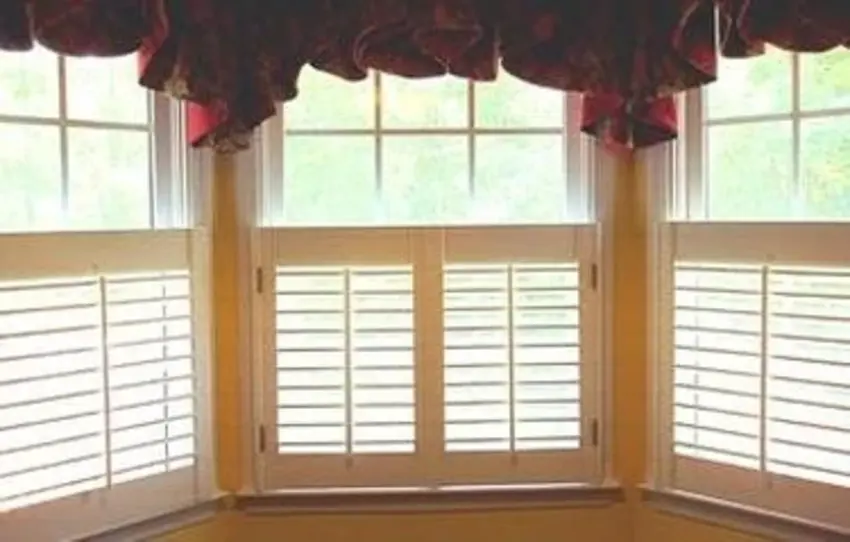Many homeowners focus on aesthetics and energy efficiency when installing windows. But there’s a critical aspect that often gets overlooked: jamb depth. This term might sound technical, but understanding what it means can make all the difference in how your windows perform and look.
Jamb depth refers to the thickness of the vertical sections of a window frame where the sash sits. It is vital to determine how well your windows fit into walls and support their functionality. Whether replacing old windows or installing new ones, having insight into jamb depth will help ensure you make informed choices for your home.
Importance of jamb depth in windows

Jamb depth plays a crucial role in windows’ overall performance and aesthetics. It directly impacts how well a window fits into its frame, influencing energy efficiency and structural integrity. A proper jamb depth ensures that windows are securely anchored, which minimizes air leaks and prevents moisture intrusion.
It affects the style of window treatments you can use. Deeper jambs allow for more versatile options when installing blinds or curtains.
The right jamb depth also enhances curb appeal. Windows with an appropriate profile looks better integrated into the architecture of your home.
Improper jamb depth can lead to complications during installation, potentially resulting in costly repairs. Getting this detail right is essential for your living space’s functionality and harmony.
Factors that affect jamb depth
Jamb depth is influenced by several factors, each playing a crucial role in window design and installation.
One significant factor is the wall thickness of your home. Thicker walls often require deeper jambs to ensure proper fitting and insulation.
The type of window also impacts jamb depth. Due to their opening mechanisms, casement windows typically need more depth than sliding windows.
Climate considerations shouldn’t be overlooked either. Regions with extreme temperatures may benefit from deeper jambs that enhance energy efficiency and moisture control.
Architectural style can dictate jamb depth as well. Traditional homes favor thicker frames for aesthetic reasons, while modern designs lean towards sleeker profiles.
Standard jamb depth measurements for different window types

Standard jamb depth measurements can vary significantly depending on the type of window.
For instance, double-hung windows typically feature a jamb depth ranging from 3 to 4.5 inches. This allows for proper insulation and support while facilitating easy operation.
Casement windows often have a deeper jamb, generally measuring between 4 to 6 inches. The additional depth accommodates their unique hinge mechanism and enhances durability against weather elements.
Sliding windows usually fall within a similar range as double-hung models but may extend up to 5 inches in some designs. This ensures smooth functionality and effective sealing against drafts.
Picture windows tend to have variable depths based on size but commonly measure around 3 to 6 inches. Their fixed nature emphasizes structural integrity and thermal efficiency.
The benefits of having a proper jamb depth
Having the right jamb depth significantly enhances a window’s performance. It helps ensure windows fit snugly within the wall, providing better insulation against drafts.
Proper jamb depth also improves structural integrity. This means your windows are less likely to warp or suffer damage over time, and a well-fitted window can withstand weather fluctuations more effectively.
Furthermore, appropriate jamb depth allows for easier installation of trims and moldings. This adds to the aesthetics and contributes to a seamless look in your interior design.
In terms of energy efficiency, proper jamb depth minimizes air leaks. Fewer gaps mean lower energy bills and greater comfort inside your home during extreme temperatures.
Common issues related to incorrect jamb depth
Incorrect jamb depth can lead to several issues affecting functionality and aesthetics. One major problem is air leakage when the window doesn’t fit snugly in its frame. This can compromise energy efficiency, leading to higher heating and cooling bills.
Poor sealing around windows often results from mismatched jamb depths. Water intrusion also becomes a concern; inadequate depth may allow moisture to seep in, causing damage over time.
Visibility problems can also arise. If the jamb is too deep or shallow, it might interfere with blinds, curtains, or other treatments you wish to install.
An improper fit could cause operational difficulties. Windows may stick or become difficult to open and close smoothly.
How to measure and adjust jamb depth
Measuring jamb depth accurately is crucial for proper window installation. Start by using a tape measure to determine the distance from the interior wall to the exterior surface of your window frame. This will give you a clear idea of how deep your jambs are.
If adjustments are needed, first carefully remove any trim around the window. Once exposed, you can add or subtract material as necessary—consider using shims for minor adjustments.
Ensure that each side is even, which helps maintain balance and aesthetics. Additional framing may be required; this typically involves more complex carpentry skills.
Always double-check measurements before sealing everything back up with trim. A well-measured jamb enhances energy efficiency and contributes significantly to overall home comfort and curb appeal.
Tips for choosing the right window with appropriate jamb depth
Choosing the right window involves understanding jamb depth, contributing to aesthetics and functionality. Start by assessing your home’s wall thickness. This ensures that you select a window designed for that specific measurement.
Insulation properties are also important. A deeper jamb can enhance energy efficiency, reducing heating and cooling costs. Attention to local climate conditions; certain areas may benefit from windows with greater jamb depths for better thermal performance.
Make sure to pay attention to don’t style preferences, too. Your chosen design should complement your home’s architectural style while ensuring proper installation fit within the framing.
Consult with professional installers or contractors who can provide insights tailored to your unique project needs. Their expertise will guide you in making an informed choice about jamb depth and overall window selection.
Conclusion
Understanding jamb depth is essential for ensuring windows function effectively and look great. Choosing the right depth enhances energy efficiency and aesthetics.
Choosing a window with proper jamb depth means considering various factors—from your home’s architecture to climatic conditions. Every detail contributes to performance.
Attention to jamb depth can save homeowners from common issues like air leaks or moisture build-up, which often stem from improper installation.
As you plan your next window project, keep these insights in mind. The right decisions can lead to long-lasting benefits for your home’s comfort and value, ensuring that every view from those windows is framed perfectly.




